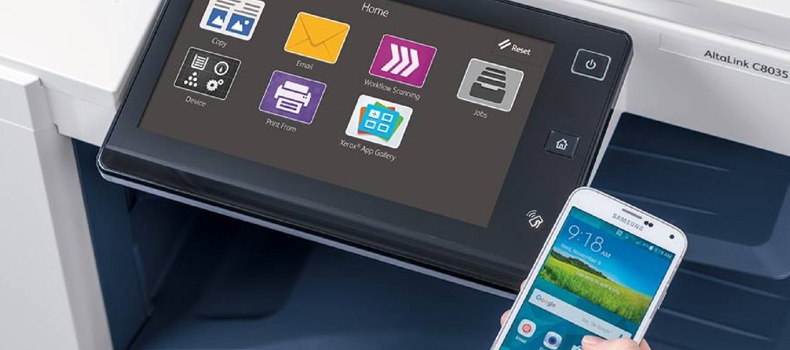Stay up to date with our latest news and insights
Supporting description on the types of content that feature in the blog.

‘Appification’ may not be a word you’re familiar with, and you probably won’t find it in the dictionary, either (at least not yet). When we say ‘appification’, we are referring to the processes and jobs being simplified by the use of applications, in this case, on your printing device.
With solutions like Xerox’s ConnectKey-powered Workplace Assistant, user interfaces on printers are beginning to look more like tablets, and for a good reason. With the introduction of applications that can be accessed directly through the printing device, it’s become possible to add levels of automation to your usual print processes.
These added levels of automation of printing processes can help to increase efficiency and save employee time.

For example, if you’re working on a customer project, or even a sale, you can use the printer applications to speed up everything from communications through to file storage with an application that saves your document to the right place making it faster to access for anyone who needs access.
You could even digitally sign a document and send it back all from within a printer application, saving time where you would previously have to print, sign and scan the document back in before sending it to a third party.
In essence, the ‘appification’ of printing processes is about making workflows, repetitive actions and time-consuming tasks easier, quicker and much more efficient.
The benefits might start small, for example a 25% time saving on a small workflow might not feel like much, but for every bit of time saved, it’s add up to something much greater. There are also benefits for other people involved in the process as the automation of some of your processes and workflows can ensure that information and documents are provided in the preferred format for everyone involved.
Further still, the apps available on the market go far beyond workflow efficiency and can introduce new levels of security, accessibility and other smart features such as the translation of documents.
As odd as it might sound, the printing/scanning/copying part of the process might even be the most time consuming part, as from the minute you scan something in, automated workflows can be triggered to carry out the next action you would need to do.
Or if printing is the end result of the process, then you can cut out some of the steps before and even add extra functionality to the printing, for example, redacting sensitive information from the final print out.
Much like your phone or tablet, the possibilities that apps can offer are endless and while there might be marketplace of available apps, you can also have applications built for your printers that align with your processes and takes into account how you use printing hardware and software.
If you haven’t already, maybe you should be considering the ‘appification’ of your printing processes to increase process efficiency and reduce the time employees spend on time-stealing tasks with smart process automation.
Supporting description on the types of content that feature in the blog.

20-09-2024
Digital document management tools offer a range of compelling benefits for businesses, including a PDF editor, a file converter and a form generator. You can also integrate with digital signatures qui...

20-09-2024
When choosing a SaaS software to deal with your company’s PDF documents and enable forms to be digitally sent and signed, you’ll want a product that’s user-friendly and easy to use. With Tungsten’s Po...

11-07-2024
Belkin is a global technology company that provides high-quality electronics products, from wireless chargers to power banks. Their people-centric approach and best-in-class functionality have positio...